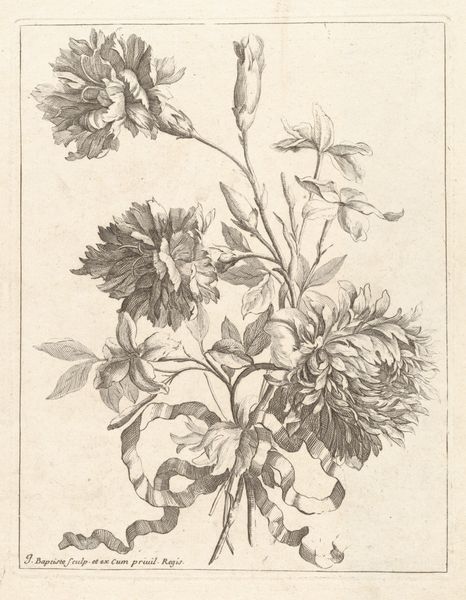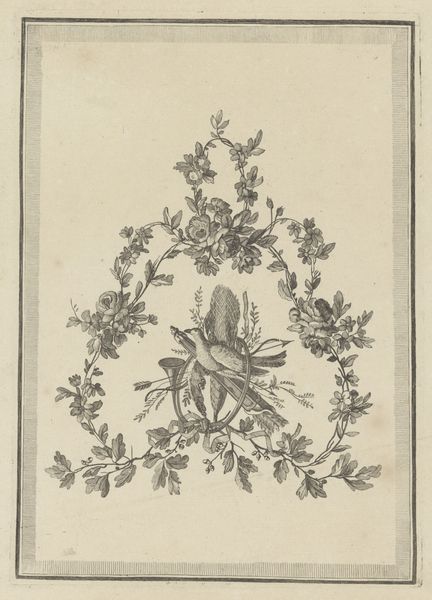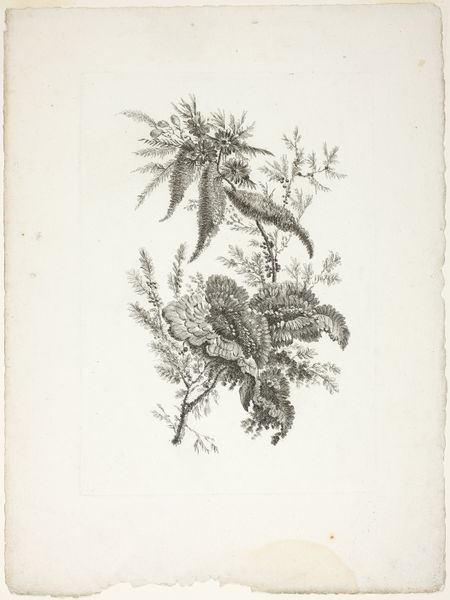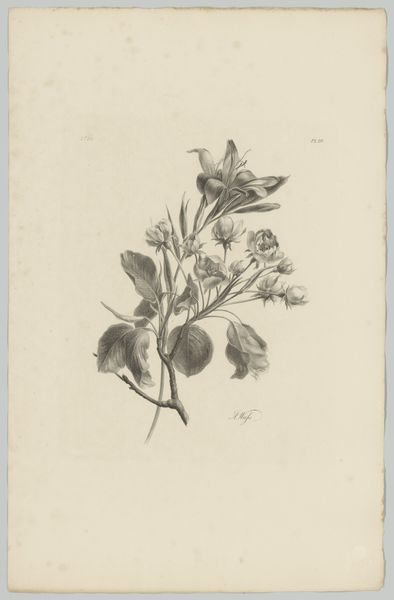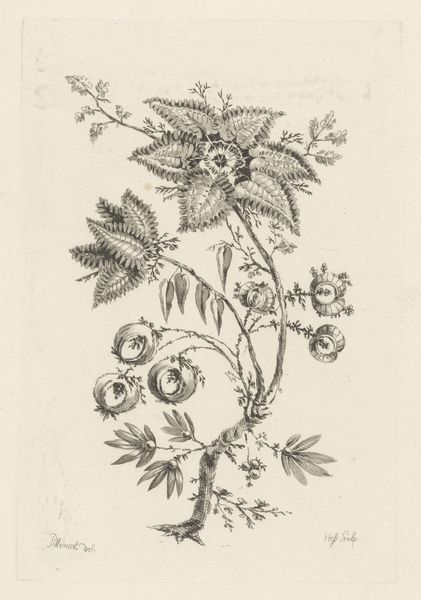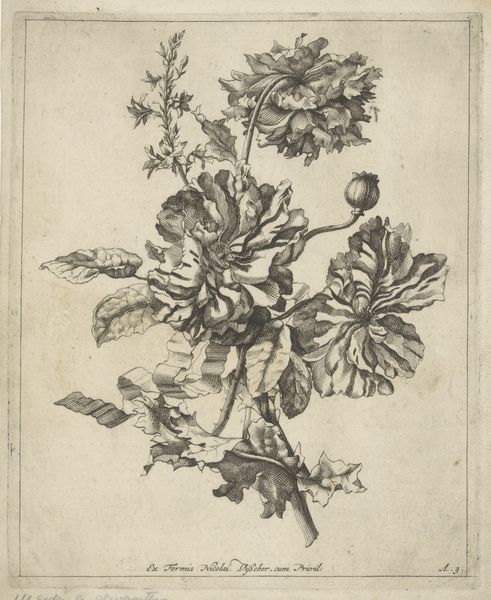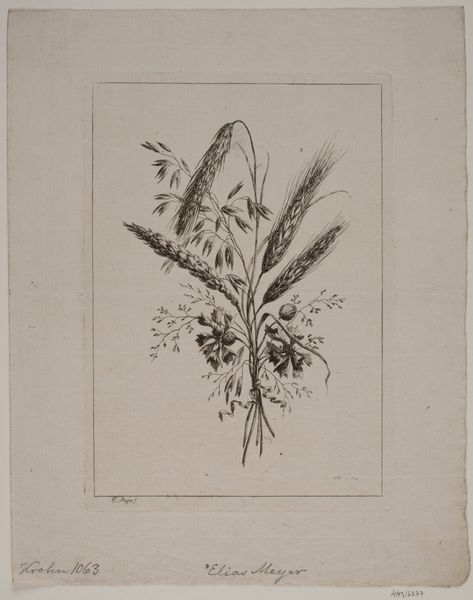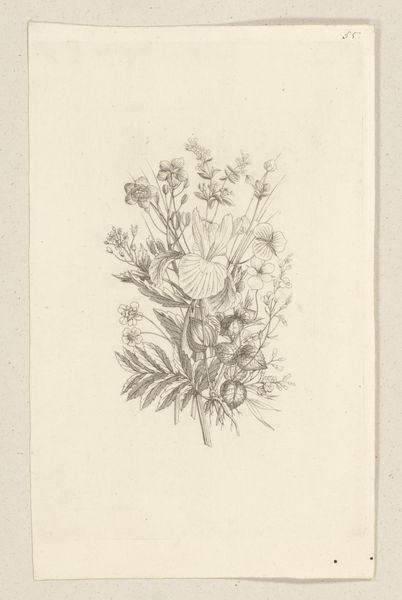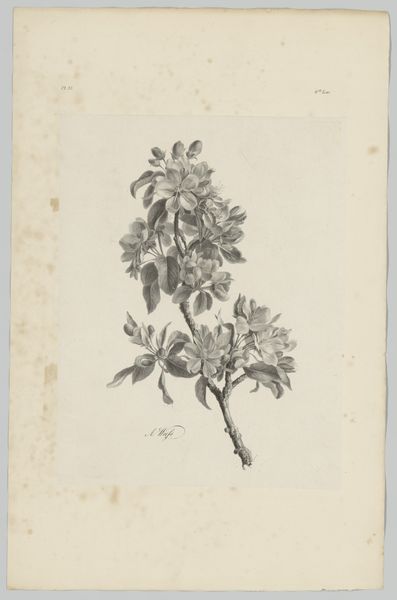
Dimensions: height 250 mm, width 178 mm
Copyright: Rijks Museum: Open Domain
Editor: Here we have an engraving titled "Trofee met wapens," or "Trophy with Weapons," dating from 1760 to 1784. It's currently housed in the Rijksmuseum. The detail in this black and white print is pretty amazing, considering it's an engraving. What's your take on it? Curator: Looking at this, I'm struck by how it marries the tools of war with naturalistic elements like foliage. Think about the social context. Who was consuming such imagery and why? Engravings were a means of mass production. Consider it as a decorative element reproduced ad infinitum and distributed. We must look closely into the accessibility this technique created. Editor: So you're suggesting that engravings like these weren't just about celebrating military might, but also about the material process that made this imagery widely available? Curator: Exactly! How does this form –an accessible print– affect our interpretation compared to a unique, say, monumental painting displayed to elites only? The seemingly disparate elements, the weapons, the flags, the foliage, everything speaks to how this object circulates ideas. How its reproduction contributes to solidifying those in its contemporary context. Editor: That makes me rethink how I perceive it. The Baroque style is ornamental. But the engraving process itself made it available to a new audience. What might this mean for Baroque ideals and their diffusion? Curator: Precisely. Think about it as a tangible object involved in material culture and exchange! By emphasizing its mass-produced nature, it underscores questions surrounding value, labour, and the relationship between art and consumerism. Editor: So, beyond the subject matter, the medium itself played a huge role in shaping its cultural impact? Thanks! That shifts my understanding completely. Curator: My pleasure. Consider that our traditional lens often separates art from function. Yet works such as this show us the complex interplay of process, aesthetic, and society, a reflection that persists today.
Comments
No comments
Be the first to comment and join the conversation on the ultimate creative platform.
